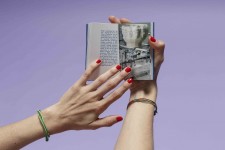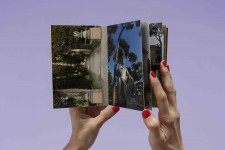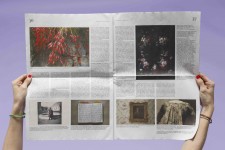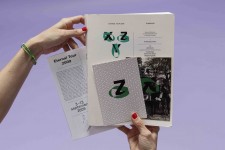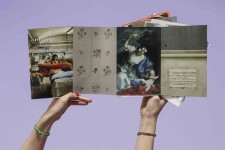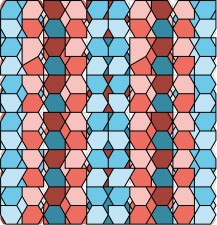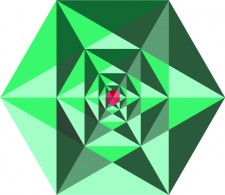In Pursuit of Unlimited Hospitality
Text excerpt from inside sleeve
Jacqueline Burckhardt and Donatella Bernardi have in common a taste for italianità, a residency at the Swiss Institute in Rome and the Stockholm experience. Jacqueline spent time in her childhood in the Scandinavian capital, as a diplomat's daughter. Donatella lives there now, working as a professor at the Royal Institute of Art. Required to integrate a teaching method based on workshop practice and a master-disciple relationship, Donatella favors getting students involved in novel shared productions and experiences, at school or on trips, rather than talking about her own artistic praxis as an example to be followed. “On the contrary, production-based arts differ from knowledge-based arts in that the knowledge of modi operandi is insufficient to allow their application. There are many reasons for this; the main one being that, in the order of doing, knowledge is power” (Etienne Gilson). The endpaper for this publication, and its flaps (where the present text appears), are an exception to the artist's pedagogical methods. The latter entrusted one of her students, Fredrik Fermelin, with all of the publication's iconographic material. Fredrik chose to create patterns, like synthetic visions emerging from the images and the essay written by Jacqueline, whose last paragraph he highly regards.
The cover of the book is the actualization of a discussion that arose between Jacqueline Burckhardt, art historian, and Donatella Bernardi, artist, at its inception. Donatella recalled how triumph was depicted in the layout of the book Hypnerotomachia Poliphili (1467)—where victorious, fantastical chariots parade across the pages, virtually linking the folios. Jacqueline mentioned Albert Dürer's etching Triumphzug Kaiser Maximilian I (1526)—where movement is conveyed by volutes that become autonomous graphic forms. At times, they are accompanied by words such as ‘courage', ‘skill' and ‘experience'. According to Erwin Panofsky, Dürer is an artist precisely because he is a theoretician of art. “There is no complete and finished art but the one that integrates thinking about practice.” (Jean Molino in his introduction to Idea, 1989). The black lines printed on blank paper form typographical characters, faces and one of Dürer's ribbons.
Texts by Jacqueline Burckhardt and Donatella Bernardi. Graphic design: Yann le Floc'h
Published by aparté and distributed by Les Presses du Réel in September 2014
Bilingual edition (English / French)
16,5 x 23,5 cm (softcover)
96 pages (color & b/w ill.)
Background image: cover illustration by Kalinka Janowski
